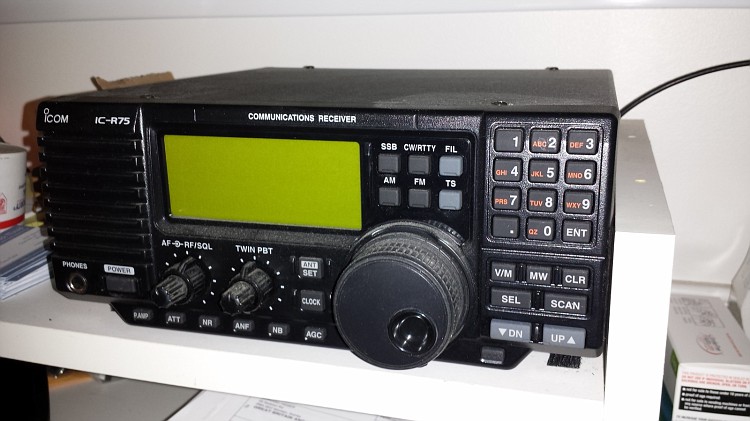And that if for an "A" AIS? ie: one the both transmits and receives and goes to foreign countries such as the Bahamas?
Yes. A General License is not required.
And that if for an "A" AIS? ie: one the both transmits and receives and goes to foreign countries such as the Bahamas?
We use our SSB/Ham radio daily. We added a Pactor modem so we can get emails, weather forecasts, grib files and send position reports. When there's no internet, it's nice having the ability to stay in touch with friends and family.
I've been told that I need a General license to operate an AIS A....and I also need something to operate my SSB. Is this correct, and how do I get them. I visited the site on the previous post, but not sure where to go from there.
Years ago only a fine ( $$$) radio was stable enough to capture weather fax charts.
So lots of ham stuff was sold mostly to be receivers, or short wave radios.
.

Okie Dokie...thanks Dimer. I successfully completed and paid the ridiculous fee for my MMSI number...I filled out the form 605 SA for ship...now do you or anyone else know if I need to fill out a separate form and pay a separate ridiculous fee for a "call sign"?
Thanks for all your help, and the detailed instructions listed on the previous post were VERY helpful!
I saw no use for mine as we have sat coms. Tore it out and used the real estate for other things.
Do you have a sat phone or something else?
Are those Spot trackers worth it? I see they have a promotion where they are $49 plus a annual $149 fee.
http://www.findmespot.com/SummerSav...e&utm_medium=text&utm_campaign=2015SummerGen3
Or the sat phone is free if you sign a one year contract for $65 a month.
Do you have a sat phone or something else?
Are those Spot trackers worth it? I see they have a promotion where they are $49 plus a annual $149 fee.
SPOT Summer Savings
Or the sat phone is free if you sign a one year contract for $65 a month.
And that if for an "A" AIS? ie: one the both transmits and receives and goes to foreign countries such as the Bahamas?
Finally got my SSB to work properly after 6 years and a bunch of technicians. Now I hear transmissions from thousands of miles (mostly on ham frequencies), and have talked from southern California to WLO Alabama with a good signal. It seems, however, that they ham bands are much more active, so I have started studying for the ham licenses. We have sat comms, but that won't give me access to the nets, hence my interest in also having SSB and ham.
What was the problem? I'm trying to get mine working now and not getting very far.
After spending days on end with no cell phone service, a KVH that wasn't working properly, and no weather reception over the VHF, I decided that the SSB really is a vital piece of equipment for the type of cruising that we do. So now I'm trying to figure out how to make it work.
Turn off everything on the boat, ie; inverter, charger, refrigeration, lights, etc. Turn on the radio and tune to 5.0000 MHz or10.0000 MHz or 15.0000 MHz. These are continues automated broadcasts for UTC time checks. The best time is in the morning, late at night or right around sunset. Where you are, you'll either pick up the signal from Hawaii or Fort Collins, CO. Then you can go back and start turning stuff on and see where the stray RF/noise is coming from. Some tines if you're around an airport or major city, there's lot of ambient noise or stray RF but you should be ok. If you still can't hear the time checks, typically there is an installation issue. When we're using the SSB or Ham frequencies we pretty much make the boat dead electricaly and based on time of the day we can communicate all over the world. Good luck.
what format is the transmission from 5, 10, 15mhz? Is it voice or encoded something-or-other? I looked at their web site and it appeared to be an encoded signal, not voice. I just want to be sure I know what I'm listening for.
... FWIW, I just tried that and found an excellent signal at 10Mhz, but nothing at 5 or 15....
